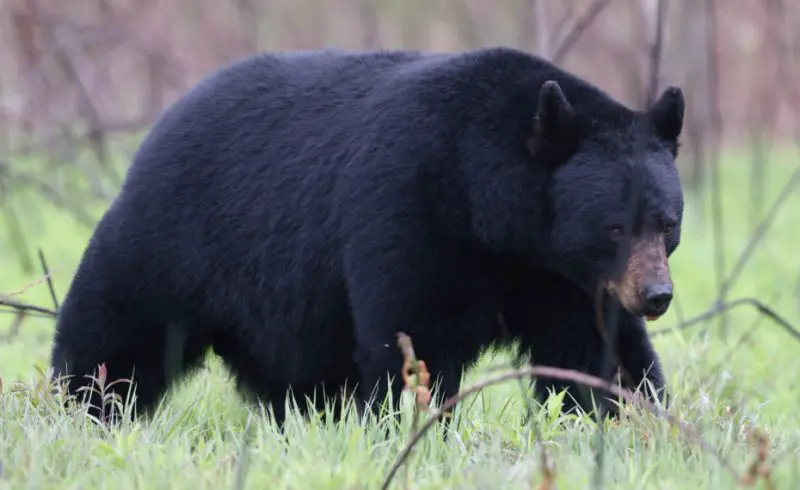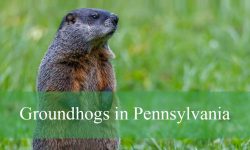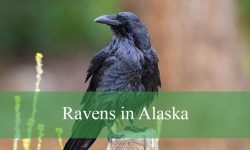Pennsylvania is home to one of the most iconic wildlife species in North America: the black bear. Despite their name, these bears are not always black; their fur can range from brown to cinnamon, and even rare blonde hues. These elusive creatures play a crucial role in the state’s ecosystems, influencing forest regeneration, controlling insect populations, and even dispersing seeds. Yet, despite their prevalence, many aspects of their behavior and ecology remain mysterious to the average Pennsylvanian. Understanding the secret lives of black bears in Pennsylvania requires looking into their habitats, daily activities, seasonal behaviors, and interactions with humans.
Black bears are intelligent, adaptable mammals capable of surviving in a variety of habitats. Pennsylvania’s dense forests, sprawling mountain ranges, and rich river valleys provide the ideal combination of shelter and food sources. These bears are solitary by nature, except for mothers with cubs or during mating season, and are most active during dawn and dusk. Observing black bears in the wild is a rare opportunity, as they are highly skilled at avoiding human contact. Nevertheless, through scientific studies and wildlife monitoring, much has been uncovered about their intricate behaviors, survival strategies, and social structures.
From the mountains of the Pocono region to the remote woodlands of the Allegheny National Forest, black bears are a living testament to the state’s wild heritage. Understanding their secret lives is not just an exercise in curiosity; it is vital for conserving their populations, promoting coexistence, and fostering respect for Pennsylvania’s natural landscapes.
Black Bear Habitats in Pennsylvania

Black bears in Pennsylvania thrive in the state’s expansive forests and rugged terrains. They are primarily found in the northern and central regions, where large tracts of public and private forests provide ample cover and food. The Appalachian Mountains, stretching through the central and eastern parts of the state, offer a network of valleys, ridges, and streams that support healthy bear populations. In these regions, dense undergrowth provides both camouflage and a rich supply of berries, nuts, and insects. Bears are also known to inhabit mixed hardwood forests and areas adjacent to rivers, where they can find aquatic plants and occasional fish.
Unlike some animals that migrate seasonally, black bears in Pennsylvania remain largely within their established home ranges, which can vary from a few square miles to more than twenty square miles, depending on the availability of food and shelter. Males tend to have larger territories than females, who require smaller areas rich in forage to support their cubs. Despite their preference for wilderness, black bears are highly adaptable and can sometimes be seen near suburban edges, particularly where fruit trees or unsecured garbage provide easy meals. This adaptability, however, brings them into conflict with humans and highlights the importance of proper wildlife management.
The bears’ choice of habitat also changes with the seasons. In spring and summer, they frequent areas with abundant vegetation and water sources, taking advantage of emerging fruits and insects. As autumn approaches, black bears gravitate toward mast-producing trees, such as oaks and beeches, to fatten up for winter. Understanding these habitat preferences is essential for conservation efforts and for people living in bear country to reduce potential encounters.
Physical Characteristics and Identification
The black bear, scientifically known as Ursus americanus, is a medium-sized bear species native to North America. Adult males, or boars, can weigh between 150 and 600 pounds, while females, or sows, are generally smaller, ranging from 90 to 300 pounds. Their height at the shoulder can reach up to three feet, and they can stand over six feet tall on their hind legs when feeling threatened or curious. Despite their name, black bears exhibit a variety of color phases. While the most common is solid black, some bears display brown, cinnamon, or even blonde coats. These color variations do not necessarily indicate subspecies differences but are a natural part of their genetic diversity.
One of the most distinctive features of black bears is their facial profile. Unlike grizzly bears, which have a pronounced shoulder hump, black bears have a straight or slightly concave facial profile and a less muscular build. Their ears are relatively large and pointed, giving them excellent hearing, while their sense of smell is incredibly keen—estimated to be seven times stronger than a bloodhound’s. Observers can often identify individual bears by unique markings, scars, or ear notches, which researchers use in tracking studies.
Juvenile bears, or cubs, are born small and helpless, weighing only around eight ounces at birth. They are typically born in the den during the winter months, a time when adult bears enter a state of torpor. Cubs remain with their mother for over a year, learning essential survival skills before venturing out independently. The mother’s behavior, including how she teaches her cubs to forage and avoid predators, is a critical component of the species’ survival.
Daily Behavior and Feeding Habits
Black bears are omnivorous opportunists, consuming a wide variety of foods based on availability and season. Their diet primarily consists of fruits, nuts, berries, insects, and small mammals, but they also eat fungi, roots, and occasionally carrion. In Pennsylvania, bears are particularly fond of acorns, beechnuts, and mountain ash berries, which are abundant in the state’s forests during late summer and fall. Their feeding behavior is crucial for the ecosystem, as it aids in seed dispersal and plant regeneration.
These bears are largely crepuscular, meaning they are most active at dawn and dusk, although they can be seen foraging at night, especially near human settlements where food is accessible. Black bears spend much of their day traveling through their home range in search of food, often moving several miles in a single outing. They have strong climbing abilities, allowing them to escape predators or access tree-borne food, and their powerful sense of smell enables them to locate hidden resources, such as bee nests or buried nuts.
In autumn, black bears enter a critical feeding period known as hyperphagia. During this time, they eat excessively to accumulate fat for the winter. A bear can gain hundreds of pounds in a few months, a testament to their metabolic efficiency and adaptability. Unlike true hibernators, black bears do not sleep continuously during winter. They enter a state of torpor, reducing their metabolic rate and activity, yet they may wake periodically and even leave the den if temperatures rise or food is available.
Seasonal Patterns and Reproduction
The life cycle of black bears in Pennsylvania is closely tied to seasonal changes. Mating season occurs in late spring to early summer, typically from May to July. During this time, males seek out females, sometimes traveling long distances, which can lead to conflicts over territory. After mating, females experience delayed implantation, meaning the fertilized embryo does not immediately attach to the uterus. This adaptation ensures that cubs are born in winter dens when survival conditions are optimal.
Pregnant females enter dens in late fall, often in hollow trees, rock crevices, or secluded brush areas. Cubs are born between January and February, usually in litters of one to three. During the first year, cubs remain dependent on their mother, learning to forage, climb, and avoid dangers. The bond between mother and cub is strong, and separation occurs gradually, typically when the cubs reach 12 to 18 months of age.
Spring brings a new phase of activity, as bears emerge from their dens hungry and in need of food after months of fasting. This period coincides with the availability of tender vegetation and early fruits. Black bears’ seasonal movements reflect a combination of instinctual behavior, food availability, and environmental conditions, highlighting their sophisticated adaptation to Pennsylvania’s temperate climate.
Human-Bear Interactions
Encounters between humans and black bears in Pennsylvania have increased as bear populations have rebounded and human development encroaches on natural habitats. While black bears are generally not aggressive toward humans, they can become bold in search of food. Improperly stored garbage, bird feeders, and unsecured compost can attract bears to residential areas, leading to property damage or potential safety concerns. Education and proper management practices are critical to reducing negative interactions while allowing bears to thrive in their natural environment.
Wildlife agencies in Pennsylvania emphasize coexistence strategies, such as bear-proof trash containers, electric fencing around apiaries, and avoidance of direct feeding. Observing bears from a safe distance provides an opportunity to appreciate their intelligence and adaptability without endangering people or animals. Black bears are often shy and avoid confrontations, relying on their keen senses and climbing abilities to escape threats.
Black bear hunting is regulated in Pennsylvania, with seasons designed to balance population growth and human safety. Hunting provides an important management tool to prevent overpopulation, reduce property damage, and maintain healthy ecosystems. Conservation programs also monitor bear populations, track movements, and study behaviors to inform policies that protect both bears and human communities.
Conservation and Ecological Importance
Black bears are a vital component of Pennsylvania’s ecosystems. By consuming berries, nuts, and insects, they help regulate plant and insect populations. Their foraging behavior aids in soil aeration and nutrient redistribution, promoting forest health. Bears also disperse seeds over large distances, contributing to plant diversity and regeneration across forested landscapes.
Conservation efforts have been largely successful in Pennsylvania. The black bear population, once threatened by habitat loss and hunting, has steadily increased over the past decades. Protected lands, wildlife corridors, and public education programs have all contributed to this recovery. However, continued monitoring is necessary to ensure sustainable populations, particularly as human development expands and climate change affects habitat availability.
Research into black bear ecology in Pennsylvania provides insights into broader wildlife management practices. Studies on bear movements, reproductive success, and feeding patterns inform strategies to reduce human-bear conflicts and maintain ecological balance. The story of the black bear in Pennsylvania exemplifies how coexistence between humans and wildlife is possible when knowledge, respect, and conservation efforts intersect.
Fun Facts and Lesser-Known Behaviors
Black bears possess remarkable intelligence and memory. They can remember food sources, human presence, and even specific trails for years. Cubs learn essential survival skills from their mother, including how to identify edible plants, avoid predators, and climb trees efficiently. These behaviors demonstrate the species’ adaptability and problem-solving capabilities.
Despite their size and strength, black bears are excellent climbers and swimmers. Climbing provides safety from threats and access to food, while swimming allows bears to traverse rivers and escape danger. Black bears also communicate through vocalizations, scent marking, and body language, conveying social cues, territorial claims, or alarm signals to other bears.
Bears play an important cultural role as well. Native American folklore often portrays black bears as symbols of strength, wisdom, and introspection. Observing these creatures in Pennsylvania’s wild forests is not only a scientific opportunity but also a reminder of the deep connection between humans and the natural world.
Conclusion
The black bears of Pennsylvania remain one of the state’s most captivating and mysterious residents. Their adaptability, intelligence, and seasonal behaviors reveal a complex life hidden from casual observation. By understanding their habitats, feeding patterns, reproductive strategies, and interactions with humans, Pennsylvanians can appreciate these animals beyond mere sightings or occasional news stories.
Conservation efforts, public education, and responsible coexistence are essential to ensuring that black bears continue to thrive in Pennsylvania’s forests. These creatures are not only a symbol of wilderness but also a vital component of the state’s ecological balance. Exploring the secret lives of black bears in Pennsylvania offers a window into the delicate interplay between wildlife, environment, and human society, emphasizing the importance of respecting and protecting the natural world for generations to come.
FAQs About Black Bears in Pennsylvania
What Do Black Bears in Pennsylvania Eat?
Black bears are omnivorous and have a highly varied diet that changes with the seasons. In spring, they consume tender vegetation, insects, and small mammals emerging after winter. Summer brings fruits, berries, and nuts, while in fall, acorns, beechnuts, and mountain ash berries dominate their diet. Occasionally, they may scavenge carrion or eat human food if accessible.
Where Are Black Bears Found in Pennsylvania?
Black bears are primarily found in northern and central Pennsylvania, particularly in regions with dense forests and minimal human disturbance. The Appalachian Mountains, Allegheny National Forest, and Pocono regions offer ideal habitats. They are also occasionally spotted near suburban areas where food sources like fruit trees or unsecured garbage attract them.
How Can You Identify a Black Bear?
Adult black bears vary in size, with males weighing between 150 and 600 pounds and females ranging from 90 to 300 pounds. While most bears are black, some may appear brown, cinnamon, or even blonde. Key identifiers include a straight facial profile, relatively large ears, lack of a shoulder hump, and distinctive markings or scars that can help differentiate individuals.
Are Black Bears Dangerous to Humans?
Black bears are generally shy and avoid humans, making attacks rare. Most conflicts occur when bears are attracted to human food or garbage. It is important to keep food secured, avoid feeding bears, and observe them from a safe distance. In Pennsylvania, wildlife authorities provide guidance on coexistence and safety.
Do Black Bears Hibernate in Winter?
Black bears in Pennsylvania enter a state of torpor during winter. Unlike true hibernators, they do not sleep continuously and may wake periodically. Pregnant females remain in dens to give birth, while males and non-pregnant females may leave the den occasionally if conditions allow. Torpor helps conserve energy during months when food is scarce.
How Do Black Bears Reproduce?
Mating occurs from late spring to early summer. After mating, females experience delayed implantation, with embryos developing in time for cubs to be born during winter dens between January and February. Litters typically consist of one to three cubs, which stay with their mother for 12 to 18 months, learning essential survival skills.
Why Are Black Bears Important to Pennsylvania’s Ecosystem?
Black bears play a vital role in forest ecosystems. Their foraging helps disperse seeds, control insect populations, and promote plant regeneration. By moving across large areas, they contribute to nutrient distribution and forest health. Conserving black bears ensures that these ecological functions continue, maintaining balance within Pennsylvania’s forests.
How Can People Coexist with Black Bears?
Coexistence requires understanding bear behavior and minimizing attractants. Homeowners in bear country should use bear-proof trash containers, remove bird feeders in summer, secure compost, and avoid feeding wildlife. Following these practices reduces conflicts while allowing bears to thrive naturally in their habitats.






